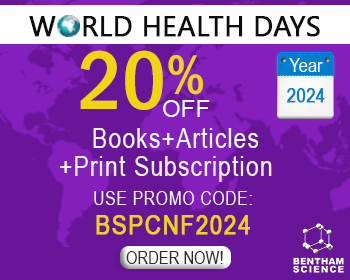Abstract
Tuberculosis (TB) is an airborne communicable disease, mainly caused by aerobic, non-motile, rodshaped, weakly gram-positive, acid-fast tubercular bacillus Mycobacterium tuberculosis (MTb). Mycobacterium has worsened the problem in humans by acquiring various types of resistances like Multi-drug resistance (MDR), Single-drug resistance (SDR), and Extensive drug resistance (XDR). Some clinical problems and challenges associated with conventional TB chemotherapy include poor patient compliance, longer duration of chemotherapy, lesser cell permeability, primary drug resistance, difficulty in maintaining higher drug concentrations at the infected site, and degradation of the drug before reaching the target site. Thus, newer micrometric or nanometric carriers drug delivery approaches are needed. Colloidal (vesicular and particulate) drug carriers offer numerous advantages over conventional therapy such as better systemic bioavailability, rapid onset of therapeutic action, avoidance of first-pass metabolism, providing sustained and controlled release, fewer dosing frequencies, desired pharmacokinetic prole and route of administration. This review article present updates and fabrication of drug delivery approaches for tuberculosis chemotherapy in order to improve patient compliance.
Keywords: Colloidal systems, drug delivery, drug resistance, drug targeting, patient compliance, tuberculosis.
Current Pharmaceutical Design
Title:Current Nanotechnological Approaches for an Effective Delivery of Bioactive Drug Molecules to Overcome Drug Resistance Tuberculosis
Volume: 21 Issue: 22
Author(s): Tarun Garg, Goutam Rath, Rayasa R. Murthy, Umesh D. Gupta, Palakkod G. Vatsala and Amit K. Goyal
Affiliation:
Keywords: Colloidal systems, drug delivery, drug resistance, drug targeting, patient compliance, tuberculosis.
Abstract: Tuberculosis (TB) is an airborne communicable disease, mainly caused by aerobic, non-motile, rodshaped, weakly gram-positive, acid-fast tubercular bacillus Mycobacterium tuberculosis (MTb). Mycobacterium has worsened the problem in humans by acquiring various types of resistances like Multi-drug resistance (MDR), Single-drug resistance (SDR), and Extensive drug resistance (XDR). Some clinical problems and challenges associated with conventional TB chemotherapy include poor patient compliance, longer duration of chemotherapy, lesser cell permeability, primary drug resistance, difficulty in maintaining higher drug concentrations at the infected site, and degradation of the drug before reaching the target site. Thus, newer micrometric or nanometric carriers drug delivery approaches are needed. Colloidal (vesicular and particulate) drug carriers offer numerous advantages over conventional therapy such as better systemic bioavailability, rapid onset of therapeutic action, avoidance of first-pass metabolism, providing sustained and controlled release, fewer dosing frequencies, desired pharmacokinetic prole and route of administration. This review article present updates and fabrication of drug delivery approaches for tuberculosis chemotherapy in order to improve patient compliance.
Export Options
About this article
Cite this article as:
Garg Tarun, Rath Goutam, Murthy R. Rayasa, Gupta D. Umesh, Vatsala G. Palakkod and Goyal K. Amit, Current Nanotechnological Approaches for an Effective Delivery of Bioactive Drug Molecules to Overcome Drug Resistance Tuberculosis, Current Pharmaceutical Design 2015; 21 (22) . https://dx.doi.org/10.2174/1381612821666150531163254
| DOI https://dx.doi.org/10.2174/1381612821666150531163254 |
Print ISSN 1381-6128 |
| Publisher Name Bentham Science Publisher |
Online ISSN 1873-4286 |
 49
49
- Author Guidelines
- Graphical Abstracts
- Fabricating and Stating False Information
- Research Misconduct
- Post Publication Discussions and Corrections
- Publishing Ethics and Rectitude
- Increase Visibility of Your Article
- Archiving Policies
- Peer Review Workflow
- Order Your Article Before Print
- Promote Your Article
- Manuscript Transfer Facility
- Editorial Policies
- Allegations from Whistleblowers
- Announcements
Related Articles
-
Substituted Naphthalen-1-yl-Acetic Acid Hydrazides: Synthesis, Antimicrobial Evaluation and QSAR Analysis
Medicinal Chemistry Reversal of Multi-Drug Resistance in Staphylococcus aureus by Natural Product-Way Forward
Letters in Drug Design & Discovery Tuberculosis and Diabetes Mellitus Co-morbidity
Current Respiratory Medicine Reviews Pharmacogenetics of Cytochromes P450 in Tropical Medicine
Current Drug Targets The Cell-Wall Core of Mycobacterium tuberculosis in the Context of Drug Discovery.
Current Topics in Medicinal Chemistry Catheter Related Line Sepsis Resulting from Mycobacterium <i>chelonae</i> Infection in an Immunocompromised Host
Infectious Disorders - Drug Targets Identification of Novel Anti-inflammatory Agents from Ayurvedic Medicine for Prevention of Chronic Diseases: “Reverse Pharmacology” and “Bedside to Bench” Approach
Current Drug Targets Current Treatment Strategies for Multiple Sclerosis - Efficacy Versus Neurological Adverse Effects
Current Pharmaceutical Design Scalarane Sesterterpenoids
Current Bioactive Compounds Aspartic Peptidases of Human Pathogenic Trypanosomatids: Perspectives and Trends for Chemotherapy
Current Medicinal Chemistry Preface
Current Drug Targets - Infectious Disorders CXCR3 Axis: Role in Inflammatory Bowel Disease and its Therapeutic Implication
Endocrine, Metabolic & Immune Disorders - Drug Targets Recent Advancement in Predicting Subcellular Localization of Mycobacterial Protein with Machine Learning Methods
Medicinal Chemistry Biomedical Applications of Natural Polymers for Drug Delivery
Current Organic Chemistry Structural Genomics and Drug Discovery for Infectious Diseases
Infectious Disorders - Drug Targets Synthesis and Biological Evaluation of Coumarin Linked Fluoroquinolones, Phthalimides and Naphthalimides as Potential DNA Gyrase Inhibitors
Letters in Drug Design & Discovery Chronic Stress and Diabetes Mellitus: Interwoven Pathologies
Current Diabetes Reviews HIV and Respiratory Disease: A Contemporary Perspective
Current Respiratory Medicine Reviews Nitroimidazole Radiopharmaceuticals in Bioimaging: Part I: Synthesis and Imaging Applications
Current Radiopharmaceuticals “Metabolic Aspects” In Inflammatory Bowel Diseases
Current Drug Delivery























